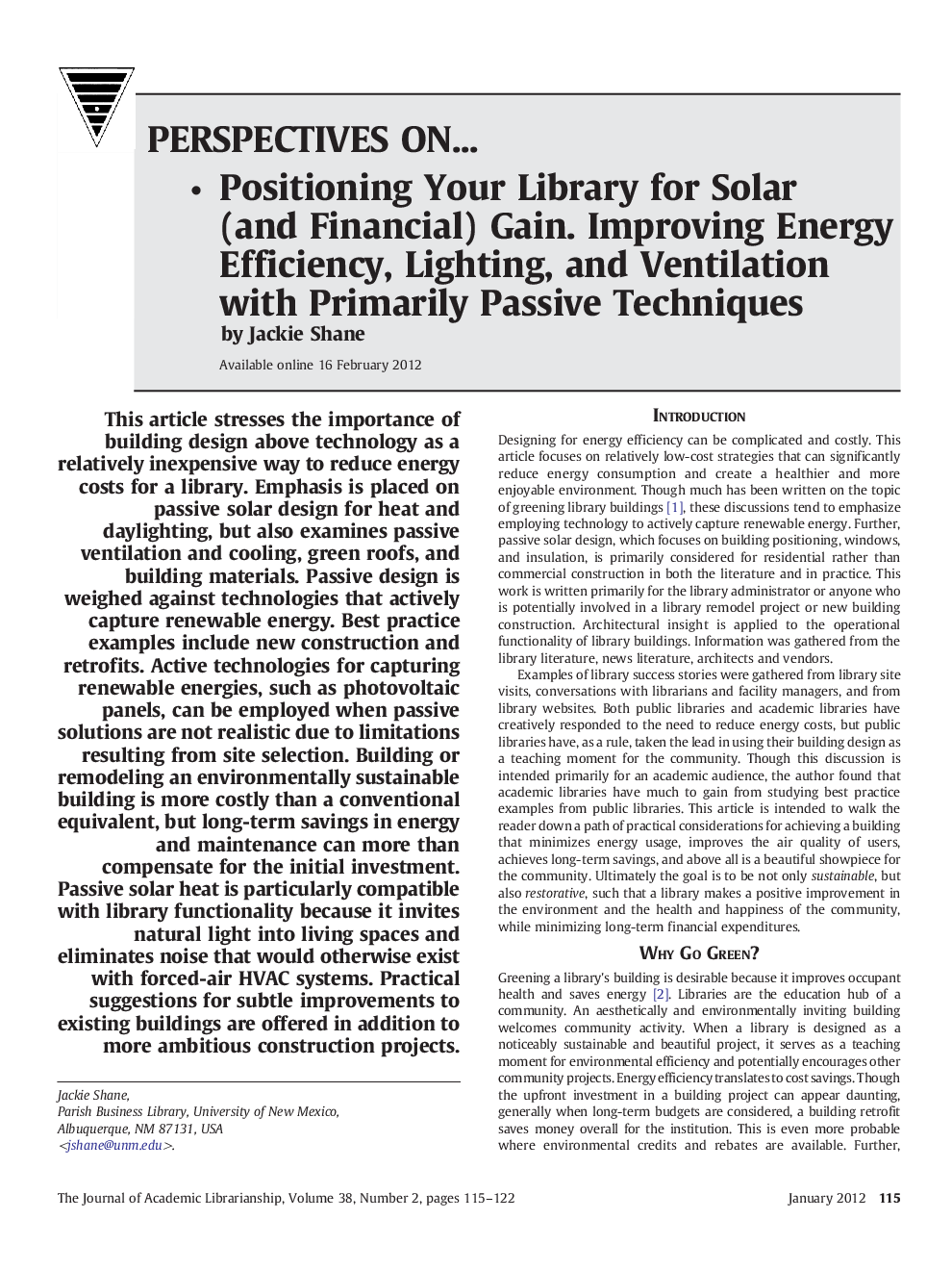| Article ID | Journal | Published Year | Pages | File Type |
|---|---|---|---|---|
| 358496 | The Journal of Academic Librarianship | 2012 | 8 Pages |
This article stresses the importance of building design above technology as a relatively inexpensive way to reduce energy costs for a library. Emphasis is placed on passive solar design for heat and daylighting, but also examines passive ventilation and cooling, green roofs, and building materials. Passive design is weighed against technologies that actively capture renewable energy. Best practice examples include new construction and retrofits. Active technologies for capturing renewable energies, such as photovoltaic panels, can be employed when passive solutions are not realistic due to limitations resulting from site selection. Building or remodeling an environmentally sustainable building is more costly than a conventional equivalent, but long-term savings in energy and maintenance can more than compensate for the initial investment. Passive solar heat is particularly compatible with library functionality because it invites natural light into living spaces and eliminates noise that would otherwise exist with forced-air HVAC systems. Practical suggestions for subtle improvements to existing buildings are offered in addition to more ambitious construction projects.
